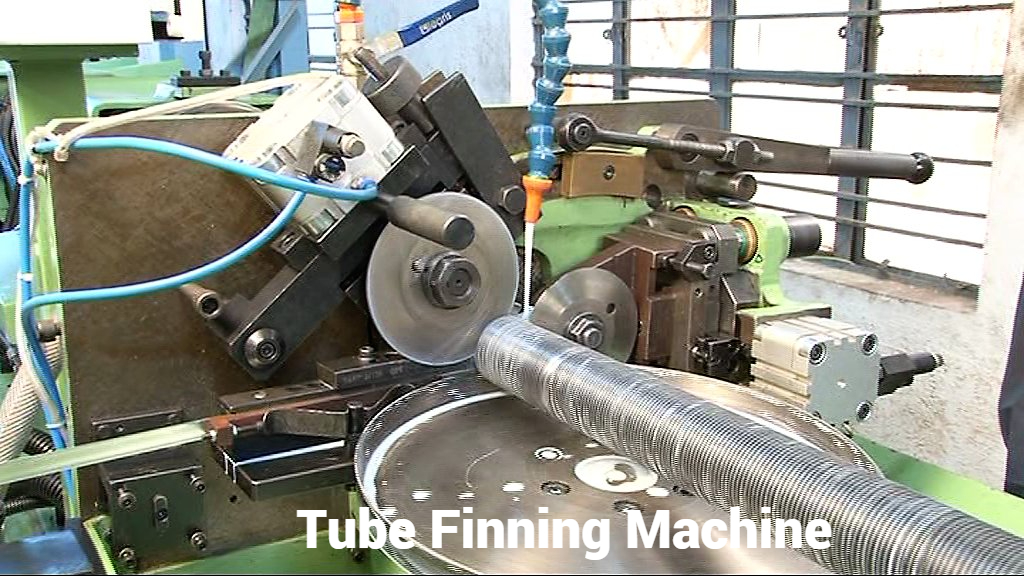
Selecting the proper type and materials
Once is the case of using fins, two things must be in mind, considering that the heat transfer throughout tube and fin is only by conduction. First, the higher the conductibility of the fin material, the better the fin efficiency and second, the fins must keep a good contact with the bare tube.
Choosing proper tube and fin materials
Regarding to materials for tube and fins, some comments are welcome, since there are some misunderstanding of the role that each one plays in the heat transfer process.
Choice of tube material must rely basically on the resistance to corrosion of the fluids involved or demand for no contamination of some of the fluids (e.g. food or pharmaceutical industry) and not on the conductivity as it is common to believe, since the thermal resistance of the tube in the heat exchange process is negligible facing the remainder thermal resistances involved.
On the other hand, the fin material conductivity plays a crucial hole. In this sense, the better first commercially viable material is copper due to its high thermal conductivity (silver would be great, but is it not commercially viable).
After copper, the next best choice for fin material is aluminum.
In fact, aluminum has commercial advantage over copper due to its much lower density (less than 1/3 of copper density) and price, allowing to compensate for its lower conductivity by using thicker fins and still with lower cost. Copper alloys are not recommended for fins, since any component in the alloy tends to reduce drastically the thermal conductivity of the pure copper.
When compactness of the exchanger is not a must and there is no corrosion or contamination issues, carbon steel may be used for fins. Of course, due to its low conductivity face aluminum, the surface area required will be larger. Even so, this may be an economical solution.
Finally, stainless steel must be avoided as long as possible for fins due to its very low conductivity. Nevertheless, some applications require the use of this material dictated by corrosion or no contamination issues of the fluid involved.
Selecting the proper tube type
The second issue to be considered when using finned tube is about temperature, not just how high it is but on which side is the highest fluid temperature - inside tube or outside, over the fins.
The concern is about different thermal dilatation of tube and fins. Since the finned tube is composed by two pieces - the tube and the fins - differential thermal dilatation can lead to reduction of the contact pressure between tube and fin. Less contact pressure means lower heat conduction throughout tube and fin. This effect increases if tube and fin are of dissimilar materials because, in this case, the rate of dilatation will be different even at the same temperature.
We can figure fins over tubes as washers. The process of manufacture is always in a manner that promotes a certain contact pressure between tube and fins.
Let us examine the case of same material for tubes and fins. If the hottest fluid is inside the tubes, the tube will be at a higher temperature than the fins, so the outside tube diameter tends to increase by thermal dilatation more than the internal diameter of the fin, since the fin is at a lower temperature. In this case, the contact pressure between tube and fins tends to increase from room temperature (during manufacturing process) to a higher operation temperature and then, we will be on the safe side.
On the other hand, when the hottest fluid is outside the tubes, the fins will be at higher temperature than the tube and the effect is reverse, that is, the inside diameter of the fins will increase, by thermal dilatation, more than the outside diameter of the tube. This tends to lower the contact pressure, lowering the heat conduction throughout fin and tube.
In the case where fin and tube are of dissimilar material, added to the fact that, usually, the fin material has a coefficient of dilatation higher than the tube material (e.g. tube of carbon steel and fins of aluminum or copper), even when the hottest fluid is on tube side, the increase of inner fin diameter can be higher than the increase of tube outside diameter, leading to loss of contact pressure, lowering the thermal conduction.
When the hottest fluid is outside tubes, over the fins, this occurrence is a certainty. This fact is one of the most important point to be observed when selecting the proper finned tube type for a particular application as explained in the FINNED TUBE TYPES section.
INTHEATEX offers a software package for the most common applications of finned tube heat exchangers



